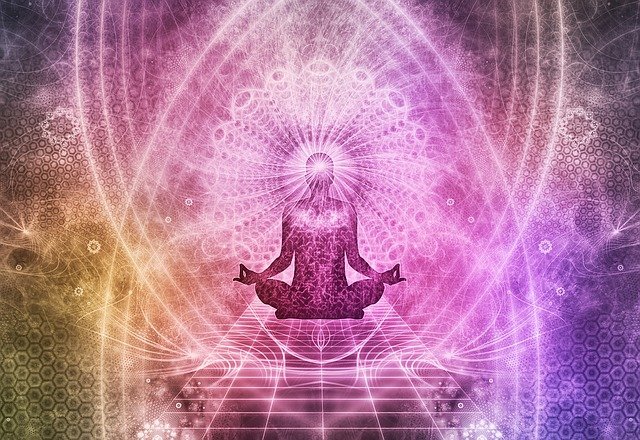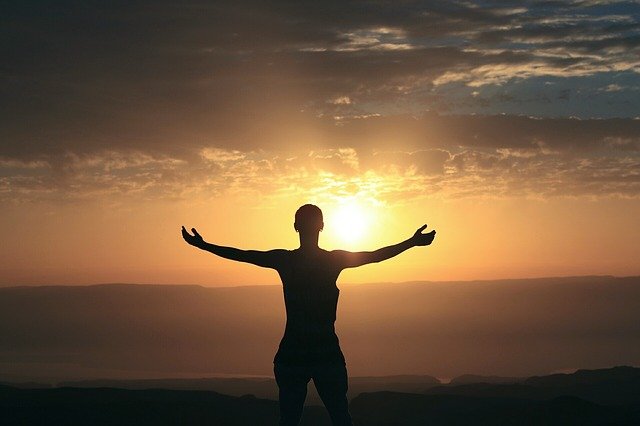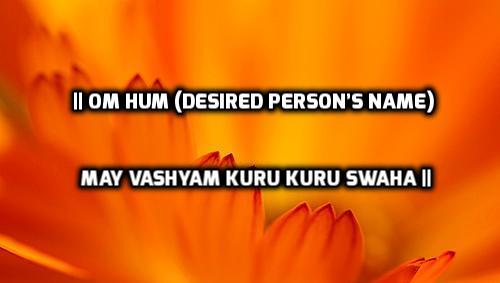Table of Contents
Chi Energy

Everything in the universe is made up of different frequencies of energy. Energy flows through living things not just as a result of physical food, but also as a result of meridians and chakras, which are energy centers. Chi (Qi or Ki) is life’s energy, a balance of Yin and Yang, positive and negative electromagnetic energy that pervades all of creation. Chi can therefore be categorized as an electromagnetic phenomenon, a type of light energy, a type of bio-electromagnetic energy, or electricity. Chi Kung (Qigong) literally means “energy cultivation” or “energetic practice.” To become physically stronger, emotionally attached, cognitively focused, spiritually linked, and energetically vitalized, there is work to be done. Develop and manifest a healthy physical body, a pure loving heart, and an open creative mind by working on the physical, emotional, mental, spiritual, and energy levels.
To become pleasant, healthy, and happy human beings, we must become a dynamic and harmonic mixture of all components of chi. “Chi is the energy channel that goes through our bodies, supplying us with circulation, nutrients, and minerals that we need to be whole,” says Taz Bhatia, MD, integrative health expert, founder of CentreSpring MD, and author of Super Woman Rx. “In Traditional Chinese Medicine, Chi was regarded as the life energy and the ultimate measure of one’s vitality.”
Integrative medicine doctors and acupuncturists have employed the ancient practice to help people achieve a state of zen in general, as well as to restore the body to its natural, healthy state. The National Center for Complementary and Integrative Health has thoroughly examined it and determined that it is a safe practice.
There are, fortunately, strategies for regaining some equilibrium. Patel recommends mind-body methods and practices such as tai chi, qigong, yoga, meditation, reiki, and massage. According to Patel, the easiest way to avoid becoming exhausted is to prioritize sleep. Wells also suggests attempting acupuncture or indulging in hobbies that increase body mobility, flexibility, and blood flow, which can be very useful for injured people. He also recommends addressing the source of your imbalance rather than merely treating the symptoms. He emphasizes the need of limiting processed foods, which can hinder absorption in the stomach, and that qi insufficiency commonly leads to vitamin inadequacy. Wells recommends that you eat stews and broth in particular. Finally, the most important thing to remember is to unwind a little more often. “We balance qi by resting,” adds the author, emphasizing the importance of stress reduction through exposure to the sun and water. “The importance of rest and recovery in the healing process of the body cannot be overstated.” Just tell them it’s for your qi if they make fun of you for taking a daily afternoon nap.
Developing Chi Energy

1) Get comfortable: Your major focus should be on your breathing, not on how uncomfortable your legs are or how you want to put a picture on the wall you’re staring at. Choose between a chair and a pillow on the floor, depending on which is more comfortable.
a) In a chair, sit with your back straight, your feet flat on the floor, and your knees shoulder-width apart.
b) On the floor, take a cross-legged or kneeling position
2) Breathe Deeply: Pay attention to how you inhale and exhale. Check to see if you’re breathing through your diaphragm instead of your chest. Breathing through your diaphragm allows you to receive more air in and out (lower in your body, close to your stomach). Cycling a lot of air through your body is essential for developing your chi. Repeat this exercise for a few days or weeks until it becomes second nature to you. Then you may utilize this type of breathing to help you get your energy flowing wherever you are.
3) Keeping my mind empty: Maintaining mental neutrality and not thinking about anything is challenging. However, for the 5-10 minutes you’re doing it, try to focus just on breathing. The interior and exterior are analogous to the yin and yang, which are opposites but complementary.
4) Practise Tai Chai: Tai Chi is a Chinese martial art that aims to help you maintain your chi balance. Though there are many distinct motions in Tai Chi, you can begin with a few of the most fundamental to discover how they work. In Tai Chi, breathing is crucial, and you should have a firm grasp on how breath and chi interact from the previous phase. Tai Chi is essentially a sequence of calm and gentle motions designed to center you and reconnect you with your breath and chi. Varied Tai Chi schools have slightly different ways of doing the forms, or steps, within the practice.
5) Practice arm work: This isn’t a Tai Chi form, but it might help you become more aware of your body. It can also help you move and keep track of your breath while developing chi throughout your body. Place your right hand in front of your face, palm out, parallel to your face, and in front of you.
a) Place your left hand, palm in, parallel to and in front of your stomach.
b) Slowly circle your arms in a circle.
c) Your arms will go around each other and your palms will be at varying angles depending on where you are in the circle. They go from facing totally in and out at the top and bottom of the circle to being flat when they are parallel to you in front of your chest.
d) Breathe.
6) Focus on your energy: This will help you get to the next chi level. As you practice your breathing and exercise of choice, pay attention to areas of your body where energy isn’t flowing. [10] These are energy blockages, and you’ll need to pay attention and resolve to clear them out and get the energy flowing again. Some people can move their energy on their own through breathing and physical activity, but when it comes to energy work, many of us need help and instruction. To discover how your body’s energy is doing, take the diagnostic test below. It will assist you in determining which components are present in your body as well as which are deficient and require treatment.
7) Work on connection: This is when you’ve reached the summit of chi. All of your prior efforts breathing, physical movement, and energy flow – will be combined with a spiritual component. As a result, you will acquire a level of mindfulness or concentrated awareness. The spiritual aspect of boosting your chi, comparable to Buddhist Zen practice, can be a lifelong endeavor. We might be able to achieve the desired state one day, but we won’t be able to get close to the next. To completely appreciate this spiritual link, as well as the physical and energetic aspects, you must be fully grounded in the present moment and fully aware – it is not about traveling to another plane of consciousness.
Affirmations

1. I’m concentrating on tai chi.
2. I’m at ease.
3. My circulation is excellent.
4. I am quite focused.
5. I am a specialist in tai chi.
6. My posture is excellent.
7. My tai chi technique is flawlessly executed.
8. I am aware of the situation.
9. Tai chi is something I enjoy doing.
10. I have no trouble defending myself.
11. I intend to begin practicing tai chi on a regular basis.
12. Concentration is becoming simpler for me.
13. Unconsciously, I’ll relax.
14. I shall not be deterred by distractions.
15. I want to perfect the art of tai chi.
16. I’m not going to change my mind.
17. I’ll be aware of my chi.
18. My tai chi skills are slowly but steadily developing.
19. I’ll be conscious of my movements.
20. My mind and body are growing more in tune with each other.
21. Today is going to be a fantastic and productive day.
22. I am in good health, am content, and feel safe.
23. I am an infinite being capable of creating anything I desire.
24. I seem to draw love wherever I go.
25. I greet today with confidence and calm.
26. I have all I require to address any problems that may arise.
27. I am gorgeous, powerful, and strong.
28. I am grateful for everything I have, everything I am, and everything that is.
29. I will use my inner wisdom to make wise decisions all day.
30. Wonderful things will unfold before my eyes today.
31. I have a lot of nice and nourishing thoughts in my head.
32. Anything that comes my way, I can handle.
33. I have had a lot of success and love in my life.
34. I am not limited by anything, and my potential is limitless.
35. As a way of life, I prefer peace and harmony.
36. I am both complete and whole.
37. Every cell in my body feels positive.
38. Today will bring good things into my life.
39. Today, I will attract success, wealth, and happiness.
40. Everything will work out in my best interests.
41. I have complete control over my life and delight in every element of it.
42. Today has been a day of love and success for me.
43. I am a creative person with an infinite supply of ideas.
44. I am at peace with the entire universe.
45. Everything that is excellent is now flooding into my life.
46. I am surrounded by prosperity.
47. I am thankful for all the blessings in my life.
48. As a result of my actions, I am always prosperous.
49. In my life, I attract long-term, happy relationships.
50. In whatever I do, I achieve excellent results.
51. I see a limitless number of possibilities in front of me.
52. Everything I want comes to me.
53. I always feel safe and fulfilled in my relationships.
54. I am overwhelmed by the love of the people who surround me.
55. I adore the sensation of falling in love.
56. I give off an aura of unconditional love.
57. I am flooded with love’s vibration.
58. I yearn for affection and receive it in spades.
59. I give love to others and receive it many times over.
60. Everywhere I go, I discover love.
61. I am lovely and deserving of love.
62. I am glad for my life’s wealth of love.
63. It is my birthright to love.
64. I receive more love from others the more I love myself.
65. I have an open heart that is ready to receive love.
66. Everything I do is in tune with the frequency of love.
67. Love warms my heart and soul.
68. I always seem to invite joy into my life.
69. My ambitions have become a reality.
70. I am deserving of success.
71. I have a lot of stuff in my life.
72. Every day, my dreams spontaneously develop into reality.
73. I am thankful for the love that I have in my life.
74. I see love,” she says. I’m in love. “I am in love.
75. I love sincerely and passionately.
76. Every day, I learn to love more.
77. Every day, I am showered with love.
78. I am adored for exactly who I am.
79. I unconditionally love myself.
80. Every part of my existence brings me joy.
81. I am deserving of the affection I am shown.
82. Today is a new day, a new chance to start over on a positive note.
83. Today is the start of a new chapter in my life, and I meet it with fresh eyes and a fresh mind.
84. My day is filled with abundance, and I have all the love, confidence, and strength I need to have a fantastic day.
85. Right now, I give myself permission to let go of negative and toxic thoughts and let good energy in.
86. I’m focused, pumped, and ready to face anything that comes my way today with a good outlook.
87. I am grateful and appreciative of everything I have and all the love in my life right now.
88. I am filled with excitement and happiness right now, and I transmit that energy throughout the rest of my day.
89. Today, I feel beautiful on the inside and out, and I define my own beauty by my positive energy, happiness, and love.
90. This outpouring of love and positive energy enables me to enter my day with the ability to do everything I set out to do, into my purpose, into my words, and into this present.
91. Today, I try to be aware of the wonder that surrounds me and to maintain a cheerful attitude throughout the day because it pervades my entire existence.
92. I exude great energy and approach each day with clear eyes and a clear mind.
93. Today is a new day, and a new chance to start over on a positive note.
94. My day is full of abundance. Today, I have all of the happiness, love, and positive energy I need to enjoy the best day ever.
95. At this moment, I give myself permission to let go of negative and toxic thoughts while allowing positive energy to flow through me.
96. With a beginner’s mind, I am focused, excited, and ready to take on whatever comes my way today.
97. I am strong and powerful, and I exude a lot of positive energy.
98. I’m filled with excitement and happiness right now, and I’m confident that today will be a great day!
99. I am beautiful on the inside and out, and my good energy, compassion, and abundance of love determine my own attractiveness.
100. I am truly grateful to be alive today and to have the opportunity to pursue my passions.
101. I am confident in my body and voice, and I understand that today is the most important day of my life, and I will spend it in the way that brings me the most joy.






